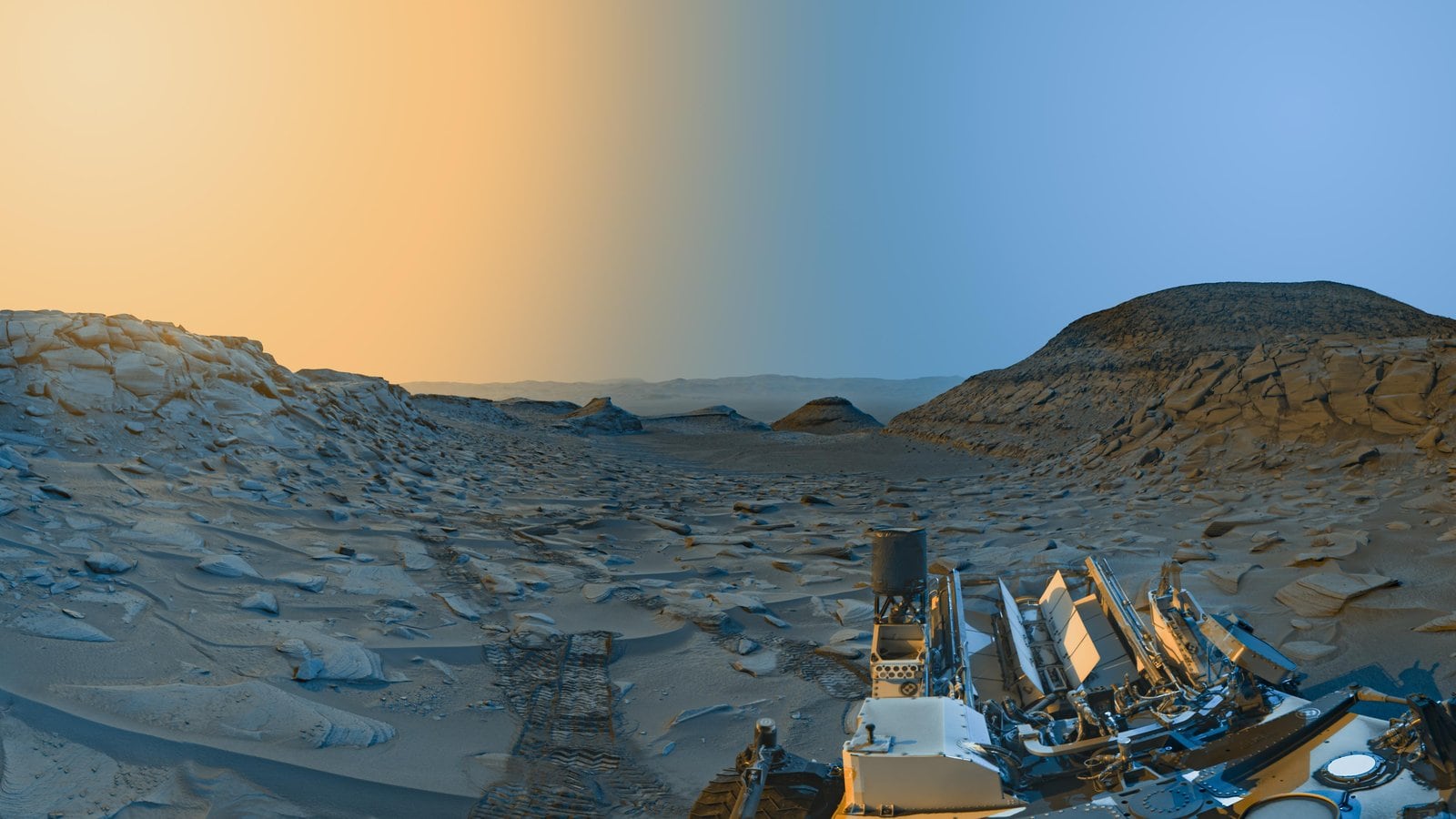NASA’s Curiosity rover has been exploring the surface of Mars for more than a decade now—diligently traversing the unexplored landscape to collect soil, rock, and air samples for researchers on terra firma. Occasionally, it gets to dabble in its other hobby: Martian photography.
A great example is one of its most recent pics, showcasing a stunning sunrise and blue afternoon sky simultaneously on Mars. Curiosity captured an image of the Marker Band Valley before it left the area to head to other parts of the Red Planet. The new image is really a composite taken on April 8 at 9:20 a.m. and 3:40 p.m. local Mars time, depicting stunning details and the exquisite contrast in lighting between the two times of day.
Here's the morning pic:

The morning panorama with no color added.
NASA/JPL-CaltechAnd here's the afternoon shot:

The afternoon panorama with no color added.
NASA/JPL-CaltechCombine them together and add a splash of color, and you have the image above!
While the visuals are certainly captivating, the image was originally in black and white—with coloring added later by an Earthbound artist. The blues of the image help the yellow of the rising sun pop on the left hand side of the pic. Meanwhile, two rocky hills—Bolivar and Deepdale—rise up dramatically in the center right of the image.
Eagle eyed viewers can also see the tracks left behind by the SUV-sized rover embedded into the martian soil.
“Capturing two times of day provides dark shadows because the lighting is coming in from the left and the right, like you might have on a stage—but instead of stage lights, we’re relying on the sun,” Curiosity engineer Doug Ellison of NASA’s Jet Propulsion Laboratory said in a statement.
In a press release, JPL referred to the image as a “postcard” from the 12-year-old Mars rover, which took the image using its black-and-white navigation cameras after completing a major software update in April. It took a similar photo from atop Mars’ three-mile-tall Mount Sharp back in November 2021.
Currently, Curiosity is on a slow and steady drive uphill through a canyon towards a cluster of craters on top. The journey is providing researchers at NASA plenty of opportunities to make observations much like its recent postcard to expand our images and viewpoints of the martian surface—that is, until we can get there and do it ourselves.
For now, however, we’re in good hands with the eye candy that Curiosity is still dishing out.






